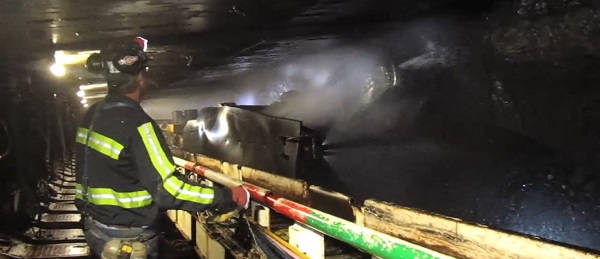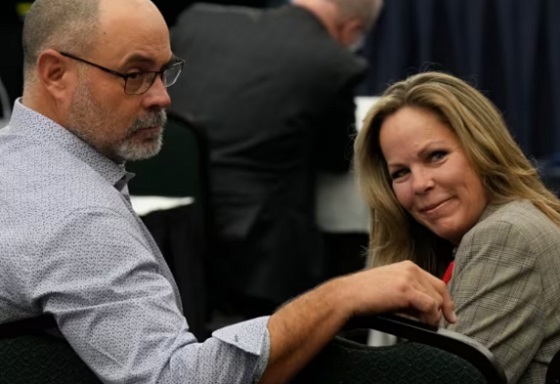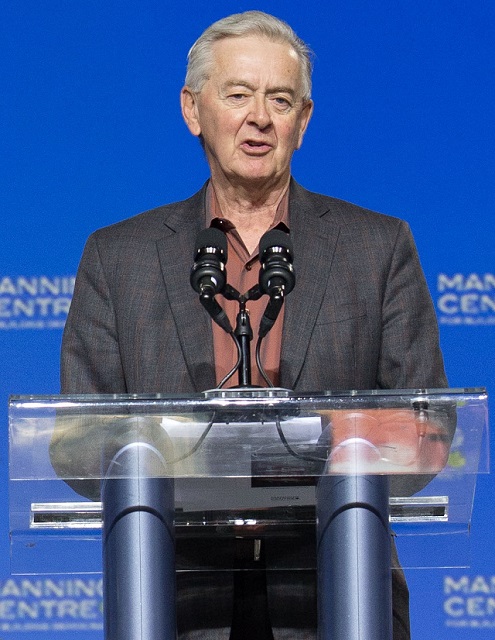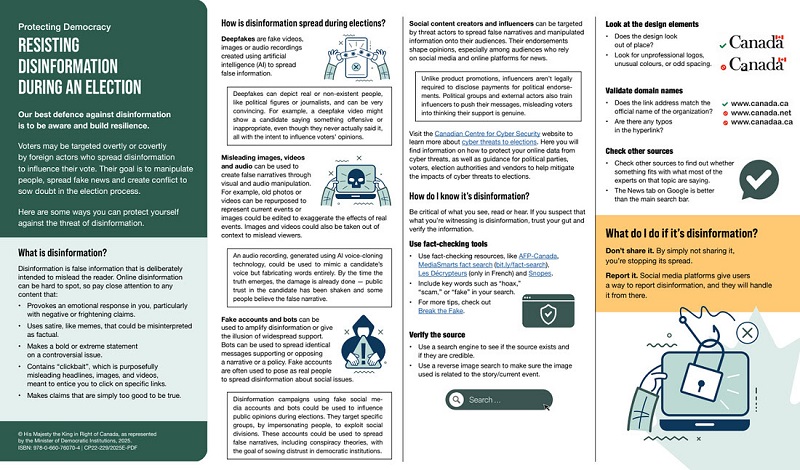Alberta
You are NOT alone! Text4Hope aims to help Albertans shoot down the Covid-19 Blues

Are you self-isolated or quarantined? Are you feeling anxiety, stress, angst, depressed or struggling through this COVID-19 crisis? Alberta Health Services (ASH) has launched a new daily, no cost mental health and wellness text-based service called, Text4Hope.

Dr. Deena Hinshaw, Alberta’s chief medical officer of health, talks about the launch of the new mental health program Text4Hope at the Alberta Legislature in Edmonton Photo Courtesy / AHS
“Connection is so vitally important to our mental health and well-being,” said Dr. Deena Hinshaw, Alberta’s chief medical officer of health as she explained the free program, “aims to help provide encouragement and hope to Albertans.” Continuing, “Text4Hope sends subscribers (a daily) text message of support and encouragement, to ease stress or anxiety.” All an Albertan has to do to sign-up for this platform, “Is texted, Covid- 19 hope, to 393939 to subscribe.” Hinshaw said, “In return, they will receive text messages on healthy thinking or actions to help manage their mood.”
Dr. Vincent Agyapong, Clinical Professor, Department of Psychiatry, University of Alberta & AHS’s Edmonton Zone Clinical Section Chief for Community Mental Health, created a similar outlet for people during the 2016 Fort McMurray wildfires, said “One of the biggest benefits to Text4Hope is that it offers immediate support when experiencing stress and anxiety.”

Dr. Vincent Agyapong, Clinical Professor, Department of Psychiatry, University of Alberta & AHS’s Edmonton Zone Clinical Section Chief for Community Mental Health created the platform Text4Hope. Photo Courtesy/Department of Psychiatry U of A
No community-based Alberta-wide project like this can come together this fast without the generous financial support of numerous organizations, helping ASH make Text4Hope possible include; the Mental Health Foundation, the University Hospital Foundation, Calgary Health Trust, Alberta Children’s Hospital Foundation and the Royal Alexandra Hospital Foundation. 
The initiative cost four dollars per-person to run through this three-month project and is budgeted for 2-million-dollars right now. Donations are being accepted by all of the non-profit partners that have put up in advance to make Text4Hope possible.
While this program provides a free, evidence-based one-way text communication and is a helpful option for people in self-isolation, or quarantined and those in remote locations around the province, Dr. Agyapong stressed, “The program isn’t intended to replace (face to face) therapies or interventions but is rather another added support to someone’s overall care plan.”
All of Alberta Health Services mental health support lines and web resources remain operational during this time. For details and links for the services available in your health region across Alberta, visit this link; “Help in Tough Times”
Dr. Hinshaw added that the “program is an additional resource to help us find encouragement and strength as we navigate the day-to-day challenges of a new normal.”
Stay home plea from a healthy Canadian shocked to be a victim of COVID
Alberta
Made in Alberta! Province makes it easier to support local products with Buy Local program

Show your Alberta side. Buy Local. |
When the going gets tough, Albertans stick together. That’s why Alberta’s government is launching a new campaign to benefit hard-working Albertans.
Global uncertainty is threatening the livelihoods of hard-working Alberta farmers, ranchers, processors and their families. The ‘Buy Local’ campaign, recently launched by Alberta’s government, encourages consumers to eat, drink and buy local to show our unified support for the province’s agriculture and food industry.
The government’s ‘Buy Local’ campaign encourages consumers to buy products from Alberta’s hard-working farmers, ranchers and food processors that produce safe, nutritious food for Albertans, Canadians and the world.
“It’s time to let these hard-working Albertans know we have their back. Now, more than ever, we need to shop local and buy made-in-Alberta products. The next time you are grocery shopping or go out for dinner or a drink with your friends or family, support local to demonstrate your Alberta pride. We are pleased tariffs don’t impact the ag industry right now and will keep advocating for our ag industry.”
Alberta’s government supports consumer choice. We are providing tools to help folks easily identify Alberta- and Canadian-made foods and products. Choosing local products keeps Albertans’ hard-earned dollars in our province. Whether it is farm-fresh vegetables, potatoes, honey, craft beer, frozen food or our world-renowned beef, Alberta has an abundance of fresh foods produced right on our doorstep.
Quick facts
- This summer, Albertans can support local at more than 150 farmers’ markets across the province and meet the folks who make, bake and grow our food.
- In March 2023, the Alberta government launched the ‘Made in Alberta’ voluntary food and beverage labelling program to support local agriculture and food sectors.
- Through direct connections with processors, the program has created the momentum to continue expanding consumer awareness about the ‘Made in Alberta’ label to help shoppers quickly identify foods and beverages produced in our province.
- Made in Alberta product catalogue website
Related information
Alberta
Province to expand services provided by Alberta Sheriffs: New policing option for municipalities

Expanding municipal police service options |
Proposed amendments would help ensure Alberta’s evolving public safety needs are met while also giving municipalities more options for local policing.
As first announced with the introduction of the Public Safety Statutes Amendment Act, 2024, Alberta’s government is considering creating a new independent agency police service to assume the police-like duties currently performed by Alberta Sheriffs. If passed, Bill 49 would lay additional groundwork for the new police service.
Proposed amendments to the Police Act recognize the unique challenges faced by different communities and seek to empower local governments to adopt strategies that effectively respond to their specific safety concerns, enhancing overall public safety across the province.
If passed, Bill 49 would specify that the new agency would be a Crown corporation with an independent board of directors to oversee its day-to-day operations. The new agency would be operationally independent from the government, consistent with all police services in Alberta. Unlike the Alberta Sheriffs, officers in the new police service would be directly employed by the police service rather than by the government.
“With this bill, we are taking the necessary steps to address the unique public safety concerns in communities across Alberta. As we work towards creating an independent agency police service, we are providing an essential component of Alberta’s police framework for years to come. Our aim is for the new agency is to ensure that Albertans are safe in their communities and receive the best possible service when they need it most.”
Additional amendments would allow municipalities to select the new agency as their local police service once it becomes fully operational and the necessary standards, capacity and frameworks are in place. Alberta’s government is committed to ensuring the new agency works collaboratively with all police services to meet the province’s evolving public safety needs and improve law enforcement response times, particularly in rural communities. While the RCMP would remain the official provincial police service, municipalities would have a new option for their local policing needs.
Once established, the agency would strengthen Alberta’s existing policing model and complement the province’s current police services, which include the RCMP, Indigenous police services and municipal police. It would help fill gaps and ensure law enforcement resources are deployed efficiently across the province.
Related information
-

 Daily Caller1 day ago
Daily Caller1 day agoTrump Executive Orders ensure ‘Beautiful Clean’ Affordable Coal will continue to bolster US energy grid
-

 2025 Federal Election1 day ago
2025 Federal Election1 day agoBREAKING from THE BUREAU: Pro-Beijing Group That Pushed Erin O’Toole’s Exit Warns Chinese Canadians to “Vote Carefully”
-

 Business1 day ago
Business1 day agoChina, Mexico, Canada Flagged in $1.4 Billion Fentanyl Trade by U.S. Financial Watchdog
-

 COVID-191 day ago
COVID-191 day agoTamara Lich and Chris Barber trial update: The Longest Mischief Trial of All Time continues..
-

 2025 Federal Election2 days ago
2025 Federal Election2 days agoTucker Carlson Interviews Maxime Bernier: Trump’s Tariffs, Mass Immigration, and the Oncoming Canadian Revolution
-

 Energy1 day ago
Energy1 day agoStraits of Mackinac Tunnel for Line 5 Pipeline to get “accelerated review”: US Army Corps of Engineers
-

 2025 Federal Election1 day ago
2025 Federal Election1 day agoAllegations of ethical misconduct by the Prime Minister and Government of Canada during the current federal election campaign
-

 Business2 days ago
Business2 days agoDOGE Is Ending The ‘Eternal Life’ Of Government






